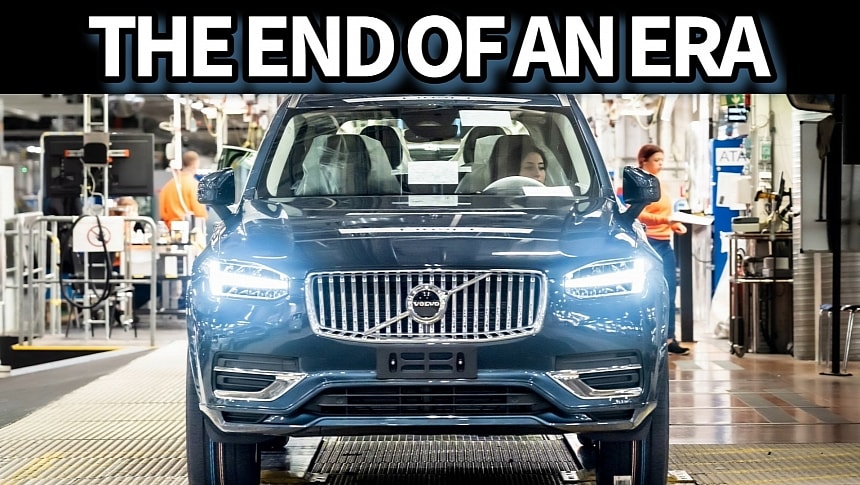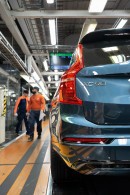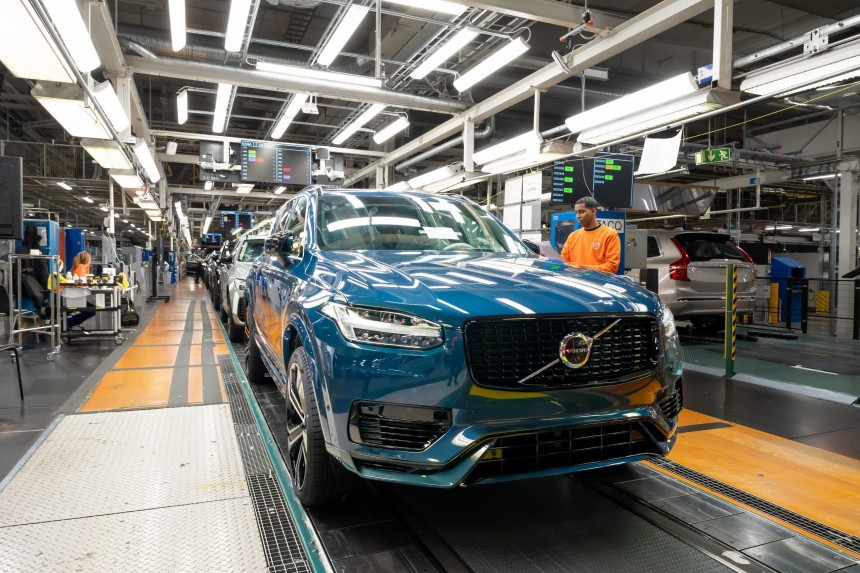Volvo has officially bid farewell to oil burners as its last diesel-powered car rolled off the line. This is part of the Swedish company's ambitions to become a fully electric automaker and to achieve net zero greenhouse gas emissions by 2040.
It's been a while since the brand's factory in Ghent, Belgium, produced its last diesel-powered vehicle. The model in question was a V60, and it is said to have seen the light of day on "a cloudy Thursday in early February." Volvo's facility in Torslanda, Sweden, made the last diesel "just the other day," and it was an XC90.
Even though diesels are not that popular in America, they still hold a good chunk of the car industry overseas. Thus, it's sad to see one automaker dropping the oil burners completely to focus on its inevitable zero-emission future, even though lithium mining is the opposite of green and diesel-powered heavy machinery is used for this process – not to mention the environmental impact of lithium mines.
Like it or not, it's not only diesel engines that are slowly being phased out of the automobile industry but gasoline mills, too. Most automakers have already transitioned to partially electrified powertrains, and it is only a matter of time until a story similar to this one announces the death of gasoline engines at various automakers, with the last gas-powered car probably rolling off the line in a few decades.
It is starting to sound like an editorial rather than a usual article, so we'd better get back to Volvo, which stated that it increased its EV sales by 70% last year and its worldwide electric market share by 34%. This fuels its ambitions to become an EV maker. While its future may be fully electric, its present portfolio comprises mild hybrids and plug-in hybrids, too, which bridge the gap between gasoline and diesel-powered models and the electric future.
Volvo's ties with diesel-powered passenger cars date back to 1979, when they introduced their first oil-burning model. It was a 244 GL D6 and featured the first six-cylinder low-revving engine ever fitted in a passenger car. With the diesel market gaining momentum, the Swedish auto marque introduced its first self-built oil burner, a five-cylinder unit made in its homeland in 2001. Offered in different states of tune, this lump eventually powered many Volvos, and it also became a marine version courtesy of Volvo Penta.
In 2008, Volvo introduced its 1.6-liter diesel engines, which were highly efficient as they gave the respective models a total driving range of up to 808 miles (1,300 km) on a full tank. The brand's first plug-in hybrid diesel was launched in 2012, with up to 31 miles (50 km) of electric range. The ICE produced 215 hp, and the electric motor added another 70 hp. The company's second self-built diesel came out in 2013, and last year, they moved away from ICEs by selling their stake in the combustion engine joint venture company held with Geely.
Even though diesels are not that popular in America, they still hold a good chunk of the car industry overseas. Thus, it's sad to see one automaker dropping the oil burners completely to focus on its inevitable zero-emission future, even though lithium mining is the opposite of green and diesel-powered heavy machinery is used for this process – not to mention the environmental impact of lithium mines.
Like it or not, it's not only diesel engines that are slowly being phased out of the automobile industry but gasoline mills, too. Most automakers have already transitioned to partially electrified powertrains, and it is only a matter of time until a story similar to this one announces the death of gasoline engines at various automakers, with the last gas-powered car probably rolling off the line in a few decades.
Volvo's ties with diesel-powered passenger cars date back to 1979, when they introduced their first oil-burning model. It was a 244 GL D6 and featured the first six-cylinder low-revving engine ever fitted in a passenger car. With the diesel market gaining momentum, the Swedish auto marque introduced its first self-built oil burner, a five-cylinder unit made in its homeland in 2001. Offered in different states of tune, this lump eventually powered many Volvos, and it also became a marine version courtesy of Volvo Penta.
In 2008, Volvo introduced its 1.6-liter diesel engines, which were highly efficient as they gave the respective models a total driving range of up to 808 miles (1,300 km) on a full tank. The brand's first plug-in hybrid diesel was launched in 2012, with up to 31 miles (50 km) of electric range. The ICE produced 215 hp, and the electric motor added another 70 hp. The company's second self-built diesel came out in 2013, and last year, they moved away from ICEs by selling their stake in the combustion engine joint venture company held with Geely.







